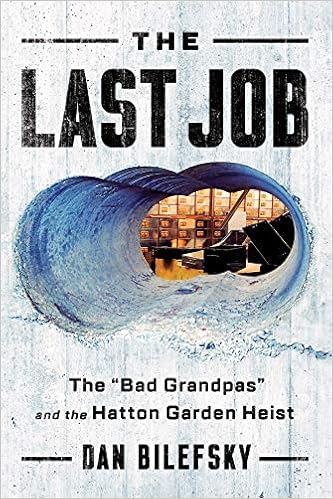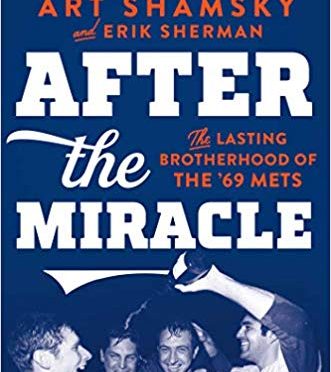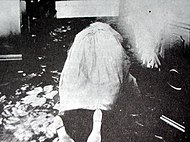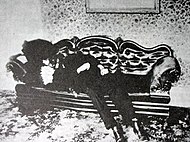Insight Editions has done it again . . . a gorgeous book that is an offer you can’t refuse. Save the date of May 14 — that’s the day The Godfather: The Corleone Family Cookbook ($35) hits kitchen tables and bookstores. And yes, it has been officially licensed by Paramount pictures.

Now, you’ll finally be able to make your very own authentic Italian meals with recipes inspired by the Corleone family, including delicious pastas, sauces, meatballs, breads and desserts. Immerse yourself in the classic story of the Italian immigrant family determined to keep their long-held traditions intact in the new world. Featuring 75 recipes complete with gorgeous photography for infamous dishes such as “The Best in the City” Veal Marsala, Clemenza’s Sunday sauce, and of course (our fave), “Leave the gun” cannoli.

Liliana Battle whips up the text and the photos by Stacey Tyzzer make the food on the page seem like food in your mouth. Yummy!
Celebrating the strong themes of loyalty, family and tradition, the tasty tome sheds new light on the legendary cinematic trilogy. Including images and quotes from the films, this cookbook is an absolute must-have for all fans of The Godfather–especially those with a taste for the finer foods in life.

 Noted fans of Algren’s include Don DeLillo, whom Algren mentored, and Russell Banks; he was friends with Richard Wright and had a long affair with Simone de Beauvoir. CUNY literature instructor Colin Asher’s close reading of Algren’s work, and his access to Algren’s FBI file, allow him to reconstruct in vivid detail Algren’s life, from his Depression-era struggles to his Army service to his sudden fame and then his struggles late in his life. A fascinating glimpse into the world of a writer who deserves to be remembered and re-read by new generations of readers.
Noted fans of Algren’s include Don DeLillo, whom Algren mentored, and Russell Banks; he was friends with Richard Wright and had a long affair with Simone de Beauvoir. CUNY literature instructor Colin Asher’s close reading of Algren’s work, and his access to Algren’s FBI file, allow him to reconstruct in vivid detail Algren’s life, from his Depression-era struggles to his Army service to his sudden fame and then his struggles late in his life. A fascinating glimpse into the world of a writer who deserves to be remembered and re-read by new generations of readers.

 During these centuries Rome gained in splendor and territory, then lost both. The empire reached from modern-day Britain to Iraq, and gradually emperors came not from the old families of the first century but from men born in the provinces, some of whom had never even seen Rome. By the fourth century, the time of Constantine, the Roman Empire had changed so dramatically in geography, ethnicity, religion, and culture that it would have been virtually unrecognizable to Augustus.
During these centuries Rome gained in splendor and territory, then lost both. The empire reached from modern-day Britain to Iraq, and gradually emperors came not from the old families of the first century but from men born in the provinces, some of whom had never even seen Rome. By the fourth century, the time of Constantine, the Roman Empire had changed so dramatically in geography, ethnicity, religion, and culture that it would have been virtually unrecognizable to Augustus.



![The Trial of Lizzie Borden by [Robertson, Cara]](https://images-na.ssl-images-amazon.com/images/I/41pah8miBpL.jpg) The Trial of Lizzie Borden breaks open one of the most sensational murder trials in American history, showcasing how the Borden murders offer a window onto America’s Gilded Age, and its most troubling social anxieties and deeply held convictions.
The Trial of Lizzie Borden breaks open one of the most sensational murder trials in American history, showcasing how the Borden murders offer a window onto America’s Gilded Age, and its most troubling social anxieties and deeply held convictions. In the powerful volume The Stonewall Riots (NYU Press, $35), Marc Stein has collected 200 documents from a variety of sources published across the United States between ’65 and ’73 that consider the diverse perspectives on what actually happened during the Stonewall Riots. Stein also explores the developments in the ’60s that led to the uprising and the mass mobilization that followed in the ’70s to understand the ways in which the Riots effected change.
In the powerful volume The Stonewall Riots (NYU Press, $35), Marc Stein has collected 200 documents from a variety of sources published across the United States between ’65 and ’73 that consider the diverse perspectives on what actually happened during the Stonewall Riots. Stein also explores the developments in the ’60s that led to the uprising and the mass mobilization that followed in the ’70s to understand the ways in which the Riots effected change.

 Between social causes and dropping fly balls in the outfield, Lucy decides to write a biography of Beethoven, much to Schroeder’s dismay.
Between social causes and dropping fly balls in the outfield, Lucy decides to write a biography of Beethoven, much to Schroeder’s dismay.

